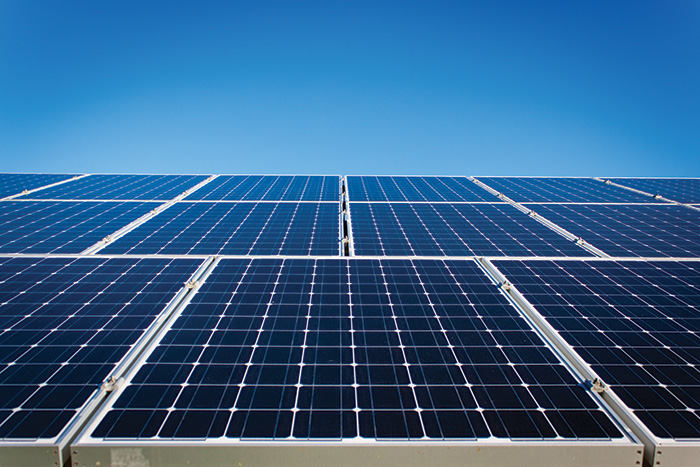Onsite Generation: Making It Work For Business

As major energy users look to build resilience, better manage risk and take a tighter control of costs, onsite generation is becoming increasingly attractive as part of a wider portfolio of energy solutions. According to a recent survey of energy‑intensive businesses in the UK, the majority are already investing in managing energy demand.
In fact, more than half of the businesses surveyed reported investing in ways to control energy demand, with 45% already engaged in onsite generation initiatives1. So, what are the options, how can it fit in to wider decarbonisation plans, and what support do businesses need?
Increasing onsite renewables is also a priority for the Government’s new Solar Power Taskforce2 which set out its plans to drive take‑up of more rooftop solar on commercial sites in line with targets to increase solar capacity nearly fivefold, to 70GW by 2035.
What Is Onsite Energy Generation?

As the name suggests, onsite energy generation is the name given to power generated at a particular location, rather than purchased from the grid. In the UK, the most common onsite energy generation solution is rooftop solar, but small‑scale wind power generation is also possible depending on available space.
Energy generation often goes hand‑in‑hand with energy storage, such as batteries or even vehicles, with businesses able to sell any excess energy unable to be stored back to the grid. While on‑site storage is currently the least used carbon reduction strategy3, it is widely considered the number one priority for the future – with nearly half of businesses surveyed currently planning or trialling this solution.
For businesses that have a high operational demand for energy, investing in onsite generation can be an attractive option. Not only can it be more cost effective, but when combined with storage solutions, it can also improve supply resilience by reducing dependence on the grid.
What Do Businesses Need To Consider Before Investing In Onsite Generation?

More than half of the businesses we surveyed were committed to controlling and managing demand. The adage that the cheapest unit of energy is the one you don’t use is as relevant as it has always been, and a combination of volatile energy prices and supply security concerns have pushed energy higher up the list of operational concerns.
When considering investing in onsite energy generation, understanding your current and future energy needs and how well your demand is optimised will be crucial to making the right choices for your business, helping you scope the size and type of generation asset best suited to you.
The technology you decide on for onsite generation will very much depend on the unique needs of your business, so research is vital – as is seeking expert advice. Most of the companies we surveyed (60%) work with their energy suppliers to unpick the options and ensure their investment is well placed and will deliver against their long‑term objectives.
Options that will also deliver decarbonisation benefits include solar panels and heat pumps, with some potential for anaerobic digestion and wind power. The pros and cons of each need to be thoroughly investigated and then aligned to priorities.
A feasibility study if you are considering rooftop solar for example, will help to determine exactly how much energy you can generate and store on site and how much that delivers against overall requirements.

For larger businesses, the drivers can range from compliance with regulatory decarbonisation targets, resilience and self‑sufficiency in energy (if supply is compromised), or sometimes businesses are purely looking at long‑term energy cost savings. Each priority will favour different options. It’s also important to gain a full understanding of any limitations a potential solution may have as well, so you know exactly what to expect from your investment.
Another factor that businesses need to consider is how they will fund investment into onsite generation. The business case is vital to get board level buy‑in. You need to factor in the potential for reducing energy costs, how such investment can mitigate the potential risks of outages and the implications of that, and how such an investment will help to achieve business decarbonisation goals.
For those companies that decide that they can’t currently commit to onsite generation for practical or cost reasons, there remains the option to invest in power purchase agreements (PPAs), where you buy renewable energy from an asset built by a third party. This option has the potential to deliver reductions on energy bills, as well as measurable decarbonisation benefits.
1: Shell Energy surveyed 100 decision makers in energy‑intensive businesses (June 2023)
2: ‘Untapped potential’ of commercial buildings could revolutionise UK solar power - GOV.UK (www.gov.uk)
3: Shell Energy surveyed 100 decision makers in energy‑intensive businesses (June 2023)
Click the article to enlarge it.


























































